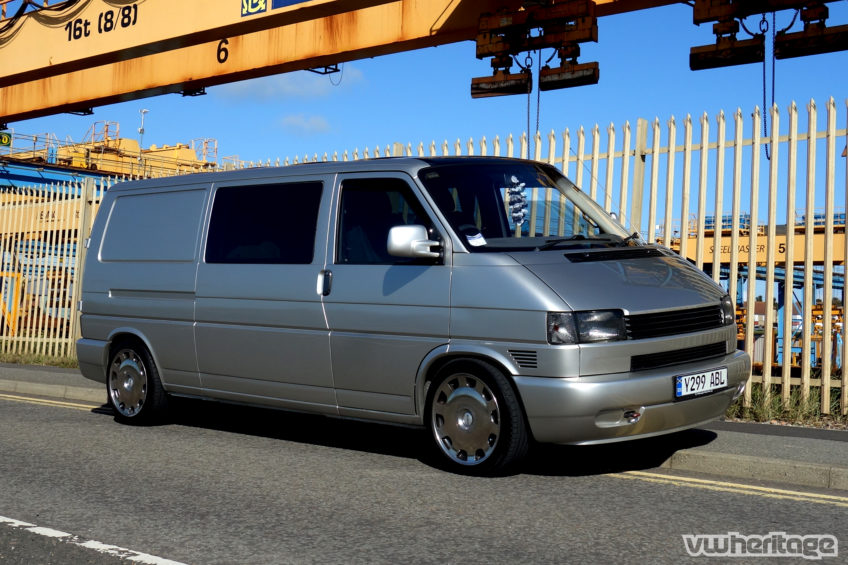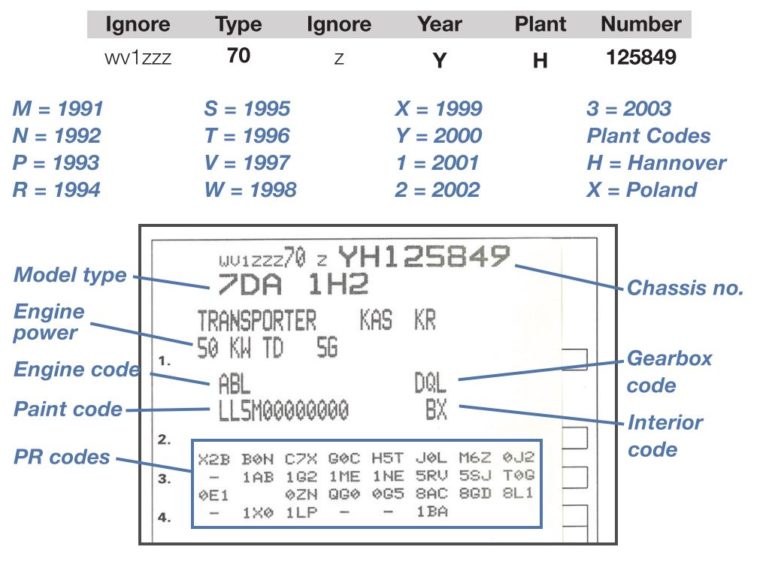Continuando con la T25, se superpuso la producción de la T4 y fue un favorito instantáneo. El motor en línea fronal que accionaba las ruedas delanteras, fue el sistema que decidieron usar para el primer anuncio de transporters VW. Siendo manufacturado a partir de 1990 en Alemania, Polonia e Indonesia, la producción abarcó 14 años. Hay 6 tipos de cuerpo principales que se pueden encontrar en los modelos T4.

Kombi
Estos tienen paneles laterales traseros, y ventanas entre los pilares B y C.
Furgoneta de Panel
No tienen ventanas en los lados detrás de la cabina, utilizado principalmente como un vehículo comercial.
Caravelle/Eurovan/Multivan
Tienen ventanas alrededor del vehículo.
Cabina Simple
Como el nombre sugiere, la parte posterior es tipo pick up, y tiene una fila de asientos en la cabina.
Cabina Doble
Tienen asientos adicionales detrás del conductor para más pasajeros y una pick up más pequeña.
Camper
Originalmente se ofrecía sólo como la conversión Westfalia hecha por VW, muchas conversiones camperas han seguido, algunas con tops altos, otras con techos pop-up.
Todos los modelos fueron ofrecidos como base de rueda corta o larga.
1996 vio la introducción del motor de VR6 en la gama T4, y como resultado un estiramiento facial a los modelos Caravelle que debían recibirlo para acomodar el motor V6.
Comúnmente referido como “nariz larga” el estiramiento facial era exclusivo a los modelos de Caravelle hasta 1999 cuando la opción fue ofrecida en toda la gama como reemplazo al “nariz corta”.
¡Conoce tu modelo!
Además de tener un número de chasis único, cada T4 tiene una lista de códigos RP. Estos códigos se utilizan para identificar las piezas utilizadas en cada vehículo único. Pueden ser encontrados en la etiqueta engomada en su libro de servicio o en la parte inferior de la caja de fusibles. Tener estos números a mano realmente ayudará a la hora de ordenar las piezas para su transportador debido a tantos cambios en la especificación a lo largo de los años.
Descodificación del número de chasis

The opinions expressed here are the personal opinions of the author and do not necessarily represent the views and opinions of VW Heritage.



Water tape / hot & cold / heater boiler VW for 1994 transporter SWB …..2459cc
That have you part boiler .